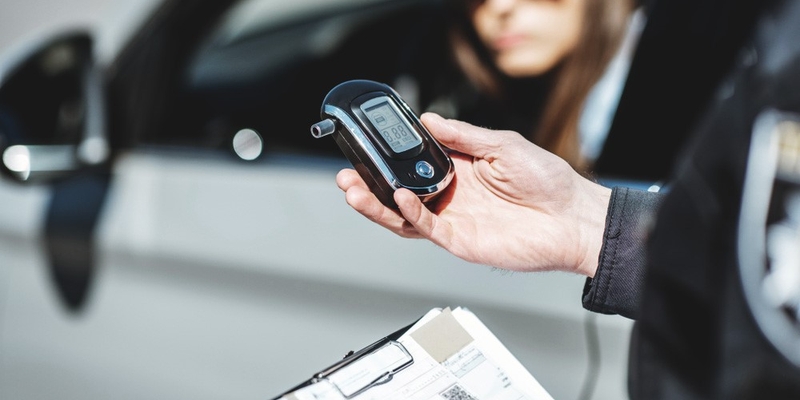
If you are not redirected within 30 seconds, please click here to continue.
Samedi: 10h – 16h HAE

If you are not redirected within 30 seconds, please click here to continue.
If you are not redirected within 30 seconds, please click here to continue.
How Impaired Driving Impacts Car Insurance

- Refusing to take a breathalyzer test is a criminal offence.
- One-fifth of 18- to 24-year-old Canadian drivers say they have gotten behind the wheel when high on cannabis or have travelled in a vehicle with a cannabis-impaired driver.
- Four Canadians are killed and many more are injured in alcohol or drug-related crashes every day.
Most people know by now it’s unacceptable to get behind the wheel and drive a vehicle if you’ve been consuming alcohol. But what does impaired driving entail? It might be different than what you think, and some of the ways people are getting charged may surprise you.
The most obvious way to get charged with impaired driving is if you are caught driving a vehicle after you’ve consumed too much alcohol. It might be at the scene of an accident, or you may have been pulled over by the police and asked to take a breathalyzer test. The maximum amount of alcohol that fully licensed Canadian drivers may have legally in their blood is .08%, indicating 80 milligrams of alcohol in 100 millilitres of blood. In Ontario, you will also face serious consequences if your blood alcohol concentration (BAC) is between 0.05% and 0.08%, known as the “warn range”. If your BAC is 0.05% or higher, you will be fined $250, and your licence suspended for three days for a first offence. You will also have to pay a $281 licence reinstatement fee after your licence suspension period has ended.
Regardless, an impaired driving conviction on your driving record will have a severe impact on your car insurance premium. There’s also the possibility your insurer will refuse to offer you coverage, leaving you searching for a new provider.
Those who have been convicted of an impaired driving offence are likely to be added to the high-risk car insurance category. That will further limit your options for getting insured since you will need to seek insurance through companies specializing in high-risk drivers, such as the Facility Association. Also, impaired driving convictions stay on your driving record for three years, but it will affect your premium for up to six years.
Don’t hold your breath: the law on breathalyzers
Canada’s impaired driving laws were strengthened in 2018 when the federal government granted police the right to request a breath sample from any driver they pull over. Maximum penalties for many drinking and driving offences increased across Canada, with some sentences doubling from five to 10 years. Drivers should now expect to give breath samples at traffic checkpoints.
Refusing to provide a breath sample is a criminal offence for not complying with a police demand. If you refuse to take a drug or alcohol sobriety test, or if your BAC is over 0.08%, the penalties include:
- A 90-day licence suspension
- A seven-day vehicle impoundment
- A $550 fine
- A $281 licence reinstatement fee
- You must attend a mandatory education or treatment program (for second and subsequent occurrences within 10 years)
- You will be required to use an ignition interlock device for at least six months (for third and subsequent occurrences within 10 years)
Even sitting in a parked car can land you in hot water
You also might be surprised to learn that just sitting in the driver’s seat of a vehicle while intoxicated can also land you an impaired driving charge, even if you had no intention of driving the car. That is because you have “care and control” by occupying the part of the vehicle that allows you to operate it.
Don't waste time calling around for auto insurance
Use RATESDOTCA to shop around, and compare multiple quotes at the same time.
Zero tolerance for newly licensed drivers
All Canadian provinces have graduated driver licensing (GDL) programs. The multi-stage programs may differ from province to province, but each has a zero-tolerance policy for drinking and driving for young drivers in their first two years of graduated licence driving. Ontario, Manitoba, Quebec, and New Brunswick have a zero-tolerance policy for any driver under age 21. Young drivers in Manitoba and Nova Scotia must maintain a zero BAC level for five years after receiving their licence.
Not just alcohol: beware of cannabis and other drugs
One-fifth of 18- to 24-year-old Canadian drivers say they have gotten behind the wheel when high on cannabis or have travelled in a vehicle with a cannabis-impaired driver. Although cannabis is legal in Canada, it can still impair your ability to react on time when driving. You might be too slow to brake at stop signs and traffic lights or make errors turning or reversing. Officers can detect if you are driving poorly and are likely to stop you if they suspect cannabis or other drugs are responsible. Don’t forget that prescription drugs can also impair your driving ability, even if you are taking them legally, for legitimate reasons. You might experience poor vision, lowered alertness and increased drowsiness.
Why the laws are so strict
. Many more are injured in alcohol or drug-related crashes on public roads involving at least one “principal highway vehicle” (i.e. passenger cars, vans, trucks, and motorcycles). Alarmingly, a driver with a BAC of 0.10% is 51 times as likely as a non-drinking driver to be involved in a fatal crash. And yet, a public opinion poll of Canadian drivers in 2017 found that 5.1% of drivers admitted they had driven a vehicle despite believing they were over the legal BAC limit (0.08%) at the time.
In 2008, nearly 40% of Canadian drivers who died in fatal crashes had been drinking before the collision. More than 30% of those who were killed had a BAC of .08% or above. If Canadians drink, drive, and kill another person in a crash, they could be sentenced to life in prison. Moreover, the number of traffic fatalities involving drugs is double to those involving alcohol alone, a fact that reflects the growing incidence of driving after drug use. Cannabis, the most commonly found drug, is present in almost half of the drug-positive fatal crashes, MADD revealed.
What are the best options to avoid problems?
The clear choice is avoiding drinking alcohol, consuming cannabis or other drugs before driving. If you are attending a celebration, use ride-sharing services or appoint a designated driver. Even if you have had one drink several hours earlier, your blood alcohol level could be .05%, resulting in a citation. With 40% of fatal auto accidents resulting from alcohol use and strict new laws, drivers shouldn’t consider taking the chance.
Protecting yourself and others as well as your car insurance costs is easy: don’t drive impaired.
Get money-saving tips in your inbox.
Stay on top of personal finance tips from our money experts!









